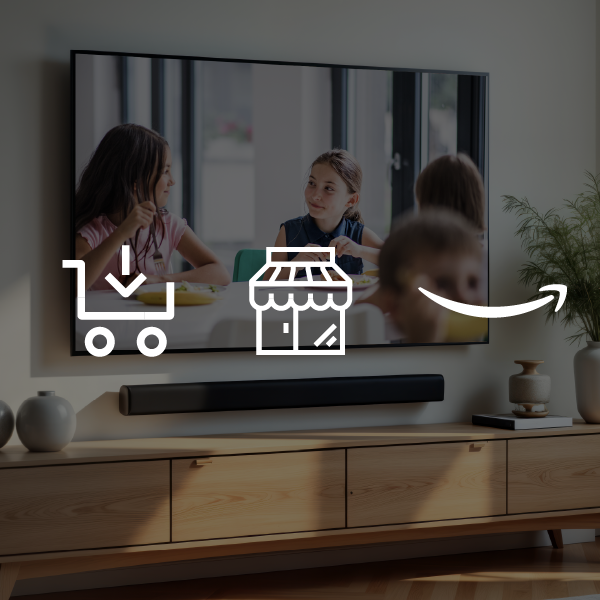
Why Linear + Streaming Work Better Together
A version of this was originally published on Adweek.
There are some things that are great on their own, but when you put them together, they become even better. Peanut butter and jelly. Milk and cookies. Batman and Robin.
The same goes for TV advertising. Advertisers often treat streaming and linear TV as two distinct marketing strategies, each with different audiences, different budgets, and different outcomes. But that couldn’t be farther from the truth. While streaming may be viewed as the Batman of the duo - the one with all the hype and attention - when you pair it with linear, they prove to be a true dynamic duo.
Combining streaming and linear TV creates a more complete, more effective TV advertising strategy. Recent campaign data from one of our clients offers a clear, data-driven example of why these channels work better together.
The Power of a Dual-Channel Strategy
As marketers seek to maximize their return on TV investments, combining linear and streaming offers a balanced approach to reach, frequency, and performance. Linear TV delivers scale and reach, ideal for brand-building and driving awareness. Streaming, on the other hand, offers precise targeting and the ability to reach niche or incremental audiences, perfect for reinforcing messages and capturing performance.
What Happened When a TV Advertiser Dropped Linear
One of our long-time advertisers in the TV space initially ran campaigns using both linear and streaming and was seeing strong cost efficiencies. But in early 2024, looking to ride the wave of streaming’s growing popularity, they shifted strategy and paused linear spend altogether, relying solely on streaming TV spots. This change presented a natural experiment: what happens when a dual-channel strategy is reduced to just one?
We observed two immediate outcomes:
Cost Per Visitor (CPV) increased significantly
Cost Per Acquisition (CPA) also trended upward
Below are charts showing month-over-month changes in CPV and CPA after the shift to streaming-only campaigns:
The above charts are streaming only CPM performance before and after linear spend was stopped. As the charts make clear, the efficiency our client had previously achieved began to decline once linear was removed from the mix.
The Case for a Convergent TV Strategy
This performance dip highlights the importance of diversification in media strategies. When both channels were active, the combined effects of broad reach and precise targeting created a more effective conversion funnel. By relying solely on streaming, our client lost the top-of-funnel strength linear provided, leading to fewer visits and ultimately higher acquisition costs.
The takeaway: Prioritizing both linear + streaming increases reach and efficiency. Linear and streaming each bring unique strengths to the table, and together they create a cycle of reinforcement that amplifies both reach and performance. We call this convergent TV.
A Data-Driven Approach to Media Planning
Take TickPick for example. They discovered that a 60/40 allocation between linear and streaming platforms effectively engages with their audience. They saw increased app installs and website traffic by airing two new brand assets simultaneously across both streaming and linear.
Advertisers who leverage both linear and streaming tend to:
Achieve stronger brand recall
Realize lower CPAs and CPVs
Maximize reach without sacrificing performance
For marketers, this reinforces the value of looking at TV holistically, not as a choice between channels but as a strategic mix. Because good things are better when they come in twos.

Anusha Mohan
As an analyst on the Data Science team, I'm all about insights & measurement optimization. Outside of work, you'll catch me walking my dog, trying out new restaurants, and binging my favorite shows.
Related
Is Dynamic Ad Insertion Reality or BS? Publishers Weigh In
Can Dynamic Ad Insertion (DAI) really change how we watch TV ads? Publishers say it’s the future. Discover why DAI could rewrite the rules of TV advertising.
Read more
Linear TV is About to Go the Way of Radio. That’s a Good Thing
Holding companies are beginning to deprioritize linear TV, shifting buying responsibilities to specialists as they chase cost efficiencies and lean into streaming.
Read more
How A Leading CPG Brand Used TV to Drive Sales on Amazon and in Stores
Read how a leading CPG brand partnered with Tatari to employ geo-testing and an Amazon sales analysis to measure how their TV ads influenced all sales channels.
Read more


